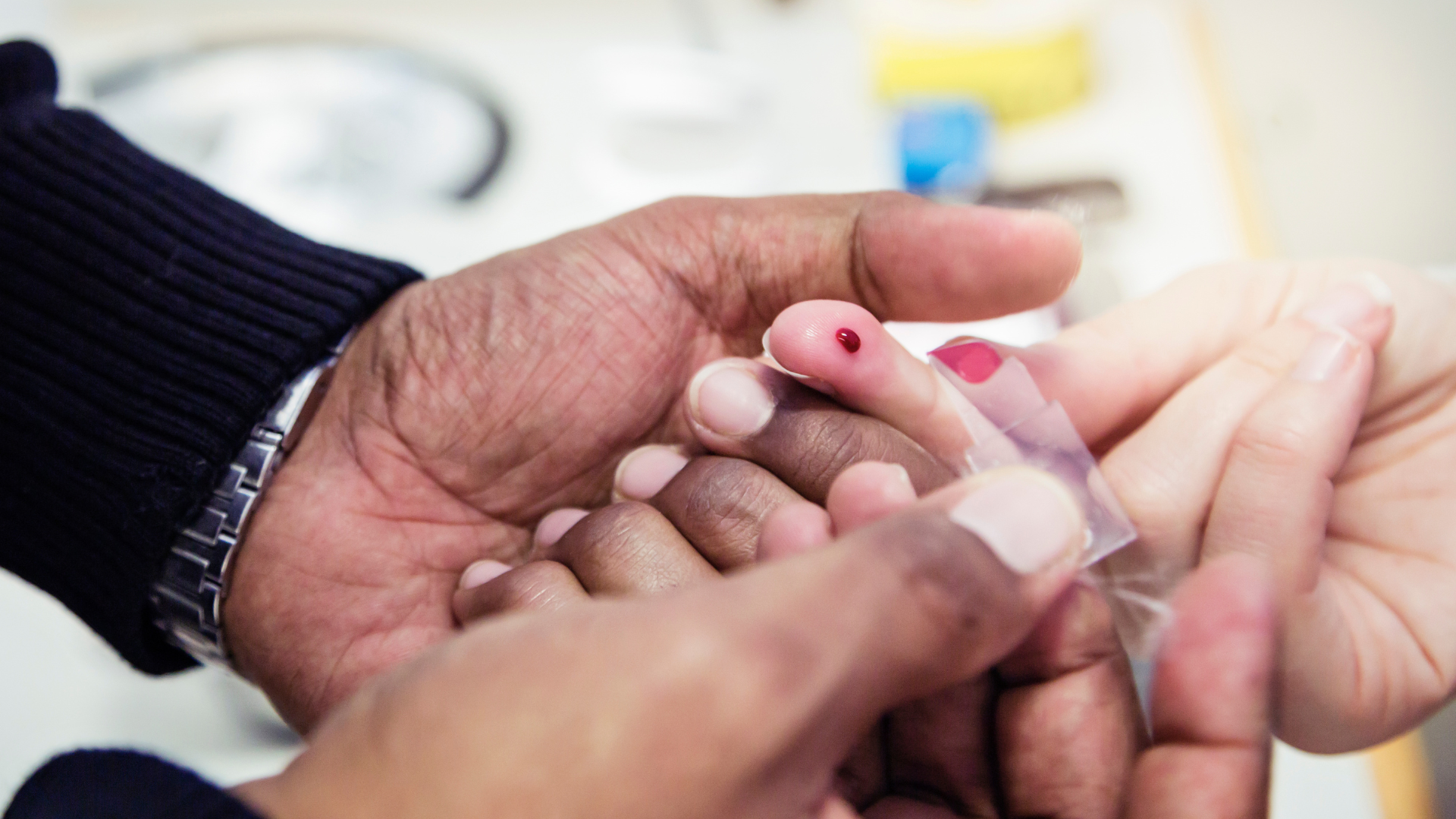|
Getting your Trinity Audio player ready...
|
What is Lyme Disease?
According to the CDC, Lyme disease is a bacterial infection that spreads from ticks to humans. It spreads when infected black-legged ticks, also known as deer ticks, bite humans.
Lyme disease is the most common tick-borne disease in the United States. A 2021 review reports that the number of infections continues to grow globally because of factors like climate change.
The CDC found that clinics report only 30,000 cases of Lyme disease each year in the United States. Yet, Lyme disease experts believe that the actual number of cases is much higher. One study estimated that 500,000 people are infected with Lyme disease each year.
The difference between the annual number of cases reported vs. the estimated number of cases is alarming. Dr. Thomas Moorcroft is a world-renowned expert on Lyme disease. He believes this gap is due to the poor diagnostic ability of current tests. Also, people may be unaware of the signs and symptoms of Lyme disease or that it can cause significant health problems. Education could limit health problems associated with untreated Lyme disease.
In this blog, you will learn about:
1) Spotting Lyme disease
2) How doctors treat Lyme disease
3) Severe Lyme disease symptoms
4) What you can do to prevent Lyme disease
How Do You Spot Lyme Disease?
Being able to identify Lyme disease could save you from severe health problems. According to the CDC, symptoms can develop within 3 to 30 days.
Mild symptoms occur early after infection with Lyme Disease. Early symptoms include:
1) Erythema Migrans (EM) Rash
2) Flu-like Symptoms
3) Fatigue
It is important to treat symptoms early because severe health problems can occur if Lyme disease is not treated. If not treated, the Lyme disease bacteria can spread throughout the body and may affect your joints, heart, and nervous system.
Identifying these symptoms early will decrease the likelihood of severe health problems. If you have were bitten by a tick and have these symptoms, please seek medical advice.
How is Lyme Disease Treated?
The first step is always removing the tick. If you will remove the tick by yourself, the Mayo Clinic recommends the following steps for tick removal:
1) Put on gloves.
2) Use tweezers to grab the tick near its mouth and as close to your skin as possible.
3) Slowly pull the tick away from the skin. Do not twist or jerk it; parts of the mouth may stay attached if you do this.
4) Put the tick in alcohol (crushing the tick can release the bacteria).
5) Wash your hands and the bite site with soap and water.
6) Then clean the bite site with rubbing alcohol.
7) See your doctor.
The best outcomes occur when treatment begins as early as possible. If your test for Lyme disease comes back negative, your doctor may prescribe antibiotics for preventative measures. This occurs only if the tick was attached to the skin for more than 36 hours and was a deer tick.
The NIH reports that antibiotics like doxycycline or amoxicillin will likely cure Lyme disease. Treatment usually includes taking oral antibiotics for 10 – 14 days, but treatment can continue if symptoms are still present. One study found that 2-4 weeks of oral antibiotics cure 95% of patients.
If treatments fail or if Lyme disease goes untreated, there can be terrible consequences.

- Access the Healing from Lyme Disease: Summit 2023
Learn from top leaders in the field the skills you need today.
What Happens if Lyme Disease Symptoms become severe?
As mentioned earlier, Lyme disease can cause severe, chronic symptoms. There are cases where severe symptoms can occur even with treatment, but it is unlikely.
According to the CDC, severe conditions from Lyme disease include:
1) Lyme Arthritis
2) Neurologic Lyme Disease
3) Lyme Carditis
The CDC reports that Lyme bacteria causes Lyme arthritis when it spreads into joints. Inflammation occurs and may cause permanent damage. Knees are most affected by Lyme arthritis. Lyme arthritis can also affect your shoulders, elbows, hips, and ankles.
Neurologic Lyme disease occurs when the bacteria affect your nervous systems. If this happens, you could experience:
· Facial droop
· Nerve Pain
· Chronic fever, headache, and sensitivity to light
Permanent nervous system damage can occur if you do not receive treatment for Lyme disease.
Lyme carditis happens when the bacteria enters heart tissue. If this happens, you could experience:
· Shortness of breath
· Heart palpitations
· Chest pain
· Fainting
If physicians suspect Lyme carditis, they may begin antibiotics immediately. If you experience any of these symptoms, seek immediate medical care.
For these more severe symptoms, treatment is still antibiotics, but antibiotics are delivered at higher doses and for longer. Treatment can last anywhere from 4-6 weeks, and treatment may require IV antibiotics.
How can I prevent Lyme Disease?
Lyme disease prevention is simple. The following will significantly reduce your risk of Lyme disease:
1) When traveling to high-risk areas, the first line of defense is to wear clothing that covers the skin. In the United States, these areas include wooded areas of the Midwest and Northeast states.
2) Wear tick repellants
3) If you take your dog with to high-risk areas, consider vaccinating your dog. Unfortunately, no Lyme disease vaccines for humans exist.
4) If a deer tick bites you, remove the tick as soon as possible. One study found that infected tick removal within 36 hours of a bite greatly reduces the chance of contracting Lyme disease. If an infected deer tick is attached for more than 48 hours, the chances of infection are high.
With the knowledge you have gained from this blog, you are now able to identify Lyme disease and take action to avoid major health problems associated with untreated Lyme disease.
Daniel Chantigian, MS, is exploring Lyme Disease. This blog is the first part of a three-part series.
References
- Centers for Disease Control and Prevention. (2019). Lyme disease home | CDC. Centers for Disease Control and Prevention. https://www.cdc.gov/lyme/index.html#:~:text=Lyme%20disease%20is%20caused%20by
- Radolf, J. D., Strle, K., Lemieux, J. E., & Strle, F. (2021). Lyme Disease in Humans. Current issues in molecular biology, 42, 333–384. https://doi.org/10.21775/cimb.042.333
- Kugeler, K. J., Schwartz, A. M., Delorey, M. J., Mead, P. S., & Hinckley, A. F. (2021). Estimating the Frequency of Lyme Disease Diagnoses, United States, 2010–2018. Emerging Infectious Diseases, 27(2), 616-619. https://doi.org/10.3201/eid2702.202731
- Centers for Disease Control and Prevention. (2019). Signs and Symptoms of Untreated Lyme Disease. CDC. https://www.cdc.gov/lyme/signs_symptoms/index.html
- Mayo Clinic. (n.d.) Lyme disease. https://www.mayoclinic.org/diseases-conditions/lyme-disease/diagnosis-treatment/drc-20374655#:~:text=The%20standard%20treatment%20for%20Lyme
- National Institute of Health. (2018). Lyme Disease Antibiotic Treatment Research. https://www.niaid.nih.gov/diseases-conditions/lyme-disease-antibiotic-treatment-research
- Halperin J. J. (2013). Nervous system lyme disease: diagnosis and treatment. Current treatment options in neurology, 15(4), 454–464. https://doi.org/10.1007/s11940-013-0240-y
- Centers for Disease Control and Prevention. (2021). Lyme arthritis. CDC. https://www.cdc.gov/lyme/treatment/LymeArthritis.html
- Centers for Disease Control and Prevention. (2021). Neurologic Lyme Disease. CDC. https://www.cdc.gov/lyme/treatment/NeurologicLyme.html
- Centers for Disease Control and Prevention. (2021). Lyme carditis. CDC. https://www.cdc.gov/lyme/treatment/lymecarditis.html
- National Institute of Health. (2018). Lyme Disease Vaccines. https://www.niaid.nih.gov/diseases-conditions/lyme-disease-vaccines
- Shih, C. M., & Spielman, A. (1993). Accelerated transmission of Lyme disease spirochetes by partially fed vector ticks. Journal of clinical microbiology, 31(11), 2878–2881. https://doi.org/10.1128/jcm.31.11.2878-2881.1993





